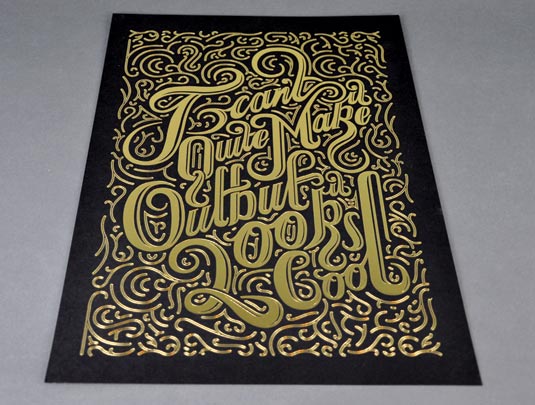14 pro tips for setting up a student freelance practice
Gain experience, cash and contacts with part one of our essential guide to freelancing as a student.
You don't need to wait until you graduate to grow your client list. Savvy students can gain valuable experience, cash and contacts by taking on freelance projects well before finishing formal education.
It's a great way to bridge the gap between studying and working. Go about it the right way and you'll gain new design and business skills, make contacts and add real-world commercial experience to your CV. You'll earn some money, too.
In the first of two instalments (you can get the second instalment in Computer Arts issue 233), Anne Wollenberg guides you through the basics, from essential equipment to clients, taxes and contracts. Here are 14 steps for setting up your freelance career as a student...
01. Think about what you're selling
There are two main things to consider: your abilities and your time. Consider what skills you have to offer and what you most want to demonstrate, because successful freelance projects will be tangible proof of what you can do. Think about how much time you can realistically spend freelancing and when you actually plan to work.
02. Identify your goals
Whatever your schedule, you can only spend so much time freelancing – so it helps to know exactly why you're doing it. Write down some objectives, like the types of clients you’d like to work for and the kind of experience you hope to get. You can keep those goals in mind when you're deciding what projects to take on.
03. Get the essential equipment
Before you start, it goes without saying that you must own – or have unlimited access to – a computer (it doesn't have to be a Mac, although they do tend to be the creative tool of choice) with Adobe Creative Suite, or a Creative Cloud subscription.
You'll need regular access to email for communicating with clients, somewhere private and quiet to work, and a way of backing up files in the Cloud and/or on a physical device. You may also need a drawing tablet, printer and scanner. Use a dedicated sketchbook for freelance work rather than mixing it up with your studies.
Daily design news, reviews, how-tos and more, as picked by the editors.
04. Start professionally
It's all too easy to get carried away with excitement when you land your first commission, but make sure you get everything in writing. If you agree something on the phone, send an email confirming it. Clients won't think badly of you – it will make you look professional.
05. Draw up a contract
Freelancing is a business, so treat it like one. That ideally means having a contract in place to cover the essentials: payment (how much, when and on whose sign-off, including any deposit or instalments); the scope of the job (brief, deliverables, and provisions for client amends); the timescale; copyright (you always want this to remain with you until you've been paid); and what happens if things go wrong, such as the project being delayed or cancelled. It happens.
06. Check out some contract templates
Try looking at contract templates – AIGA's standard agreement is a good list of things to cover, although it's geared towards the US. If you know any other freelancers, ask if they're willing to show you the ones they use. And speak to organisations like the Association of Illustrators (AOI), who can advise on and check contracts.

07. Always read the client's contract
If a client issues a contract, read it thoroughly and ask someone else to look over it too. It may include a confidentiality or non-disclosure agreement (NDA), read this carefully if so to avoid inadvertently tweeting something that breaks it, for instance. Watch out for anything relating to payment for cancelled projects, or if the client decides not to use the creative.
08. Set up your online presence
It's crucial for freelancers to have a website, even if it's just a holding page with your name and contact information. Ideally you should set up a portfolio site that shows off your best work.
09. Think about self-promo
Business cards are also worth having. They look professional, plus they're a physical object for clients and contacts to keep – which may help them remember you, and remind them to hire you again.
10. Stay on top of your accounts
You'll need to spend some of your time on tedious pursuits like accounts. Reduce stress by gathering information as you go. From the start, keep track of how much you earn, when you get paid and any money you spend on your business, and hold onto receipts and invoices.
11. Draw up a comprehensive invoice
You'll probably invoice by email, but you must include your postal address and phone number, and your clients', to meet HMRC regulations, plus an invoice date, project details, completion date and monies owed.
It's also a good idea to include a payment deadline, and don't forget your bank details so the client knows how to pay you. Make sure you stay on top of invoicing – that way your clients can stay on top of paying you.

12. Get straight on tax
As soon as you receive money from freelancing, you have to tell the tax man. In the UK, you must tell HMRC you're self-employed within three months of your first freelance payment. You'll have to pay tax on your earnings, but only if you go over your personal tax allowance, which is currently £10,000 in the UK.
The UK tax year starts on 6 April and you have to fill in a tax return, and pay anything you owe, the following January. You may also be asked to make a payment in July. HMRC provides information about working freelance and your college or university may also have resources relating to this.
In the US, you have to pay self-employment taxes including FICA and Medicare if you earn over $400 from self-employment. Find out more from the IRS website – (students, and small businesses and self-employed). The Small Business Administration site also has useful information.
13. Set aside a third of your income
Wherever you live, it's a good idea to put a quarter to a third of your freelance income aside. That should mean you're covered when you come to pay your tax bill. Dont fall into the trap of thinking it's months away so you don't need to save yet – or dipping into your tax bill fund to pay for something else.
14. Always view freelancing as a job
Plan your time, meet your deadlines and keep things polite and professional. Also, know your limits and be realistic about what you can and can't do. From the moment you start your freelance career, think about assembling a support network, starting with fellow students and tutors.
It helps to have people in your corner if you need someone to cast a fresh pair of eyes over a project. You'll be working solo, but you don't have to handle everything alone.
Words: Anne Wollenberg Opening illustration: Lewis Bartlett
This article first appeared in Computer Arts issue 232, a design education special packed with insight, inspiration and behind-the-scenes access to the world's most exciting creative minds.

The Creative Bloq team is made up of a group of art and design enthusiasts, and has changed and evolved since Creative Bloq began back in 2012. The current website team consists of eight full-time members of staff: Editor Georgia Coggan, Deputy Editor Rosie Hilder, Ecommerce Editor Beren Neale, Senior News Editor Daniel Piper, Editor, Digital Art and 3D Ian Dean, Tech Reviews Editor Erlingur Einarsson, Ecommerce Writer Beth Nicholls and Staff Writer Natalie Fear, as well as a roster of freelancers from around the world. The ImagineFX magazine team also pitch in, ensuring that content from leading digital art publication ImagineFX is represented on Creative Bloq.
